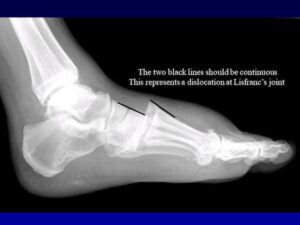Physical Address
304 North Cardinal St.
Dorchester Center, MA 02124

A splint is rigid, usually temporary, used to immobilize a broken bone. A brace is more flexible, offering support for injury recovery or prevention.
When dealing with injuries or structural issues, understanding the difference between a splint and a brace is crucial for proper treatment and recovery. While both provide support, a splint typically immobilizes a specific area to allow for healing of a broken bone, while a brace offers flexibility and support for joint injuries or chronic conditions.
By knowing the distinctions between these two devices, individuals can make informed decisions about the necessary treatment to promote better healing and overall well-being. Let’s delve deeper into the key variances between splints and braces to gain a comprehensive understanding of their respective uses and benefits.

Credit: m.economictimes.com
Injuries can stem from accidents or overuse of muscles. They may occur due to sudden impact or repetitive actions.
Both splints and braces are used in injury management, but their purposes and designs differ.
When it comes to orthopedic aids, understanding the difference between a splint and a brace is important. Both serve different functions and are used for distinct purposes. Let’s explore the functions of splints and braces in detail:
A splint is a rigid or semi-rigid device that is used to immobilize a body part, typically a limb, to prevent further injury. Splints are commonly used to provide support for fractures, sprains, or strains by limiting movement. They are lightweight, easily adjustable, and come in various forms, including finger splints, wrist splints, and leg splints.
On the other hand, braces are devices designed to provide support, stability, and compression to a specific body part. Braces are often used to protect and correct musculoskeletal conditions such as joint instability, arthritis, or ligament injuries. They aid in reducing pain, promoting healing, and improving overall function. Braces can be customized for different areas of the body, such as knee braces, ankle braces, and back braces.
Sprains and strains: Splints are often used to support and immobilize sprained or strained joints, such as wrists, ankles, or knees. This helps prevent further injury and allows the affected area to heal properly.
Fractures: In the case of minor fractures, splints are used to stabilize the affected bone or joint. This immobilization aids in pain relief and prevents the fracture from worsening.
Immobilization: Splints aid in limiting movement of injured or fractured areas, promoting proper healing and minimizing the risk of further damage.
Support: By providing external support, splints alleviate pain and improve comfort for the affected area, allowing individuals to perform daily activities more easily.
A brace is a specialized medical device that can be used in various scenarios to support, stabilize, or protect a specific body part. Unlike a splint, which primarily provides immobilization, a brace provides both support and mobility while assisting in the healing process. Knowing when to use a brace can greatly enhance the recovery and overall comfort of the patient.
When considering the difference between a splint and a brace, it’s essential to understand their distinct purposes. A splint is typically used to immobilize or support a broken or injured bone, while a brace is designed to provide stability and support for a joint.
Understanding the specific needs of the injury or condition will help in choosing the right option.
When it comes to treating injuries and providing support, it’s important to choose the right option between a splint and a brace. While both serve similar purposes, they have distinct differences that can impact your healing process. Consider these key factors when deciding which option is best for you:
Before making a decision, it’s essential to take a few considerations into account. First and foremost, you need to assess the type and severity of your injury. Splints are typically used for injuries that require immobilization, such as fractures or sprains. On the other hand, braces are commonly used for injuries that require support and stability, like muscle strains or joint instability. Understanding the extent of your injury will help you determine which option is more appropriate.
Another factor to consider is the level of activity you engage in during your recovery phase. If you lead an active lifestyle or participate in high-impact sports, a brace may be more suitable as it offers enhanced stability and protection. Conversely, if your daily activities do not involve excessive movement or stress on the injured area, a splint may suffice to provide the necessary support.
Budget is also an important consideration. Splints tend to be more cost-effective compared to braces, as they are often made from materials like plaster or fiberglass. However, braces can be more durable and adjustable, allowing for longer-term use. So, if you are looking for a more economical option, a splint may be the way to go.
When facing a decision between a splint and a brace, consulting a healthcare professional should be a priority. They will assess your injury, take into account your lifestyle and activity level, and provide expert advice tailored to your specific needs. Their expertise can help ensure you make the right choice for optimal healing and recovery.
Remember, while this information provides a general understanding of the differences between splints and braces, it is always best to seek professional guidance.
A splint is a rigid device used to immobilize and protect a fractured bone or injured joint. A brace, on the other hand, is a flexible support that helps stabilize and provide controlled movement for a joint or muscle. While both assist in injury recovery, they have different functions and designs.
Splints are used to immobilize broken bones, allowing them to heal properly. They keep the bone in place, prevent unnecessary movement, and reduce pain. Splints are often recommended for temporary immobilization until further treatment is provided, such as casting or surgery, depending on the severity of the fracture.
Braces provide stability and support to injured joints, helping to relieve pain and promote proper healing. They can be worn during physical activities or as part of post-injury rehabilitation. Braces also help prevent further injury by protecting the joint and limiting excessive movement, allowing individuals to maintain an active lifestyle.
Splints are typically used for short-term immobilization and are not meant for long-term use. However, braces can be used for extended periods, especially for chronic conditions or ongoing joint support. It is important to consult with a healthcare professional to determine the most appropriate treatment plan and duration for your specific condition.
Understanding the differences between splints and braces is crucial for choosing the right support for injury or discomfort. By grasping the unique purposes and functions of each, individuals can better manage their health and movement. Remember to consult with a healthcare professional for personalized guidance.

